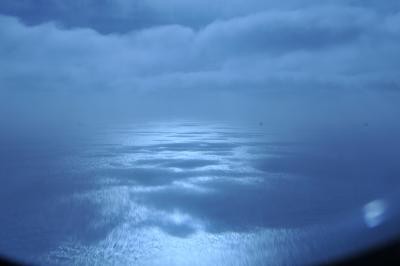IANS Photo

New Delhi, July 3 (IANS) A team of Indian scientists has identified what caused the giant "gravity hole" covering more than three million square kilometres in the Indian Ocean.
Known as the Indian Ocean geoid low (IOGL), it is Earth’s most prominent gravitational anomaly, where the gravity is lower than average, thus making the sea level there 106-metre lower than the global average.
The study published in Geophysical Research Letters, showed that the IOGL is a consequence of mass deficit inside the Earth's mantle beneath the Indian Ocean.
Scientists from the Indian Institute of Science (IISc) in Bangalore reconstructed the last 140 million years of plate tectonic movements and ran computer simulations to trace the origin of the “gravity hole”.
They found that some sections of tectonic plates have sunk through the mantle under Africa, generating plumes from under the Indian Ocean.
“Here we assimilate plate reconstruction in global mantle convection models starting from 140 Ma and show that sinking Tethyan slabs perturbed the African Large Low Shear Velocity province and generated plumes beneath the Indian Ocean, which led to the formation of this negative geoid anomaly,” the scientists wrote in the study.
They explained that the interplay of these processes beneath the Indian Ocean might have determined the position and shape of the IOGL.
“These plumes, along with the mantle structure in the vicinity of the geoid low, are responsible for the formation of this negative geoid anomaly,” lead author Debanjan Pal and Attreyee Ghosh from the IISc wrote in the study.
According to the scientists, the IOGL likely took its present shape about 20 million years ago, when the plumes started to spread within the upper mantle. And it will probably last as long as mantle material flows.
“When the temperature anomalies causing this low geoid shift out of the present-day location, the geoid low will start to dissipate,” Pal was quoted as saying to the Scientific American.






